I love my Garage Vary hood. Don’t get me wrong. But… it has this hole engineered into it. You can see it in the photo above.
Take a close look. The area with the valley doesn’t seal against the firewall.
This hood has cowl induction.
Excuse me, but WTF? How could this possibly be a good idea for an extractor hood? I know Garage Vary made a nearly innumerable amount of different designs of this hood, but… induction + extraction?
Insanity.
Please forgive the lack of wool tuft test photos in this blog post. I shot some and verified that yarn gets sucked into the back side of this hood at any speed above about 5 mph. I did that with my previous phone before having the car painted and don’t have the photos anymore.
Anyways. Cowl induction. That feature is pretty much sabotaging the extraction effort and creating more pressure behind the radiator than desired. Contrary to the hood riser craze and what you might hear on various forums, cowl induction does not cool things down.
If I could somehow duct this air to the intake? Sure. That would be awesome. It would also be nearly impossible with the Miata’s engine bay packing. Or at least beyond my own ability…
But blocking up the hole? That’s something I can do.
Out came the coroplast.
I figured I could either add something to the hood or add something to the firewall. The firewall seemed easier. My idea is to just add a small ridge behind it and put some squishy edge insulation.
The nice thing about coroplast – lots of holes. This material makes heat shield fabrication really easy. Shove something into the holes, close the hood, open the hood, and you have a perfect heat shield pattern.
I used zip ties (obviously) instead of wood skewers or something else. I didn’t want the hood scratched and the coroplast prototype was just barely held in place by a few bits of tape. Zip ties cut to length seemed to be perfect.
I (very carefully) moved the template out of the car and over to some scrap ABS. After carefully marking with a Sharpie and cutting with a Dremel, I had a decent ABS air blocking device.
A couple of test fittings and hole cutting got it the rest of the way. I only had to drill two small holes in the top edge of the firewall to secure the cowl airdam.
Stick on the edge guard and we’re done.
Thanks to the hood shape, I can both look behind AND reach behind to verify the hood seal. It’s a very good seal. Not too tight and not too loose. According to my fingers, the seal is complete across the whole cowl area.
And even better…
The hood closes. No gaps. The hood pins work as they always have, I just managed to not close them for this pic.
So, no more cowl induction for Sharka. I’m quite pleased with my solution. And it works too! Cruising temperatures are 2 to 4 *C cooler than before with the back of the hood open. That means Summertime cruising around 84 *C coolant temps, or about 183 *F. I’m extremely happy with that.
Oh yeah! I’ve been meaning to post one more GV hood pic for a while.
This sticker is on the bottom of my hood. 1988.
The 1988 vintage is pretty interesting to me, especially since the Roadster was a 1989 model year car. Garage Vary must have had access to a very early Eunos prototype in order to start producing these hoods a year beforehand.
I wonder how many cars wore this hood before it finally came to Sharka?

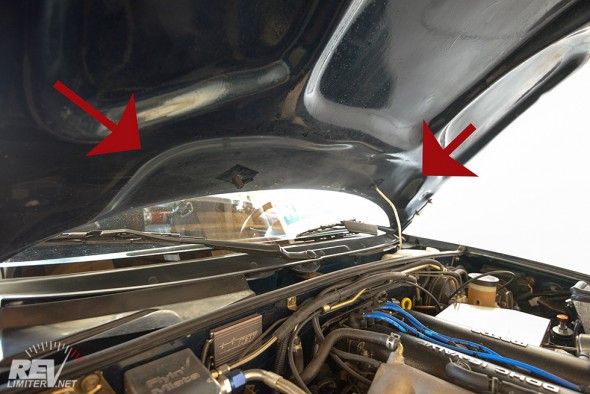
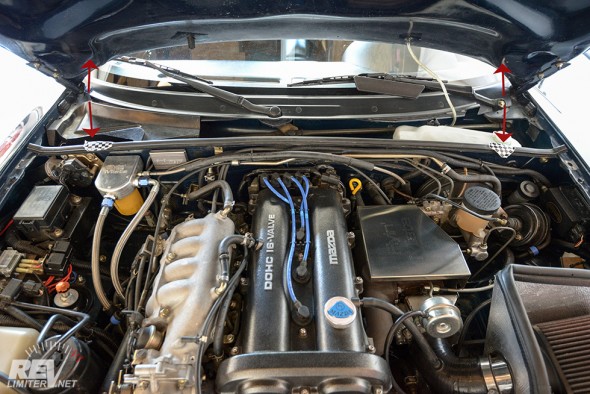
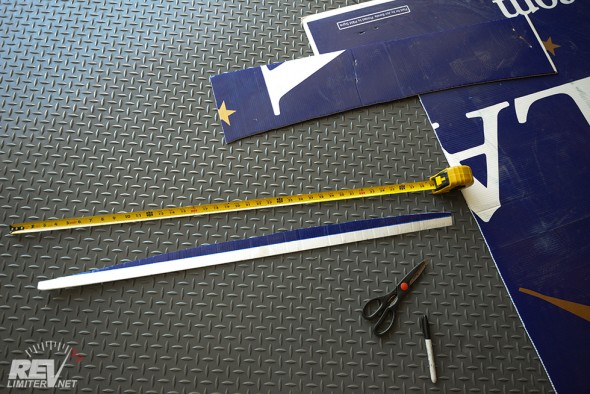
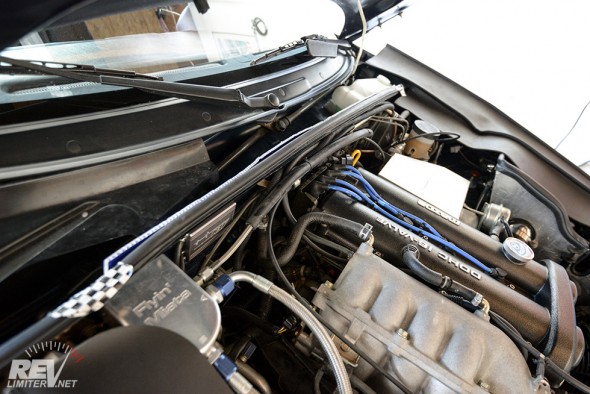
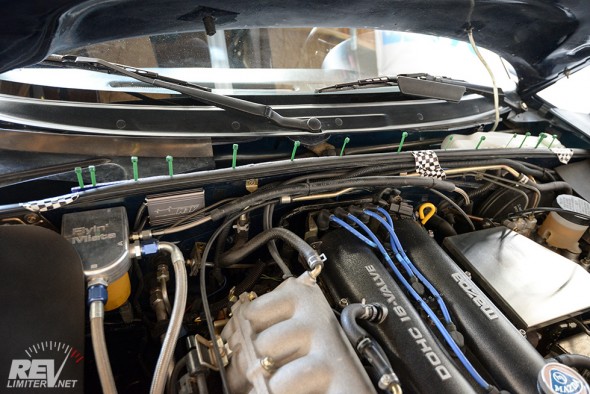
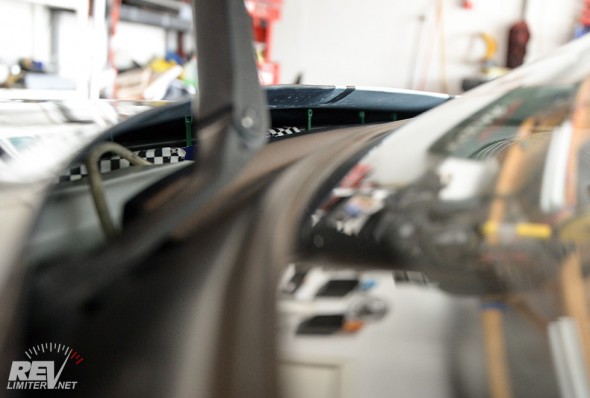

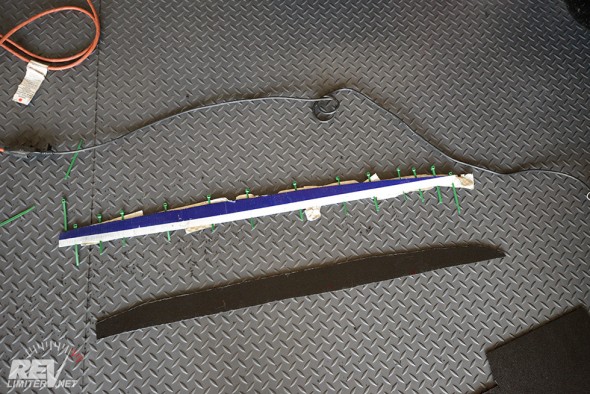

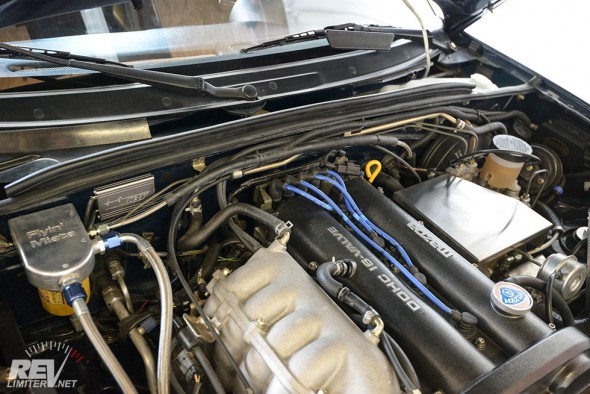
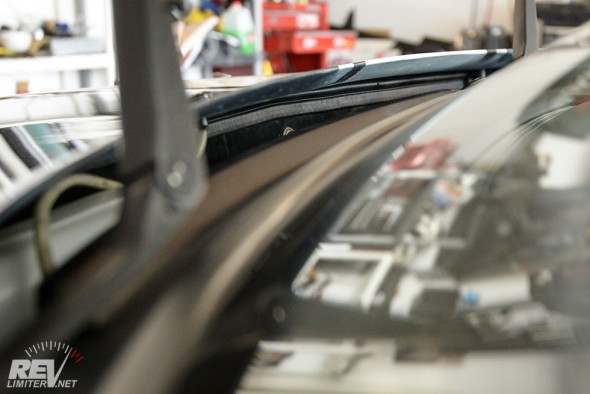
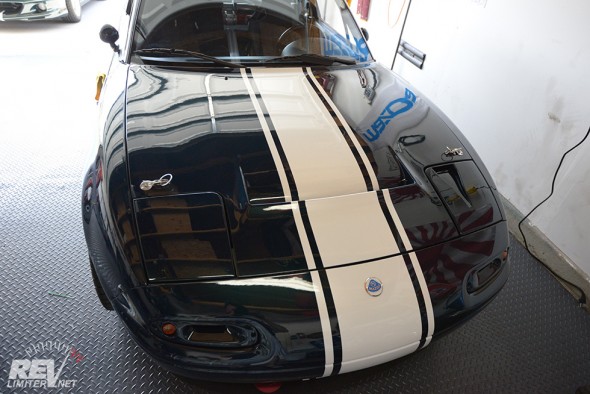
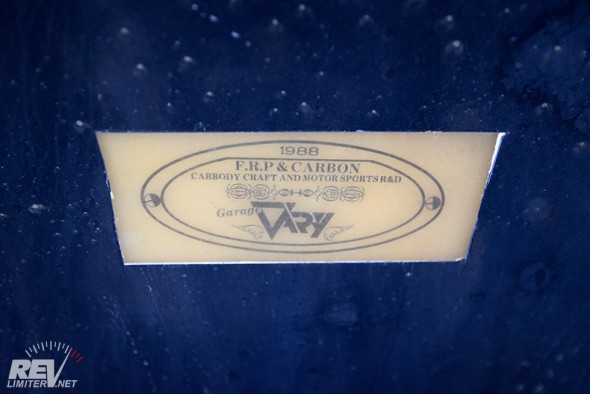
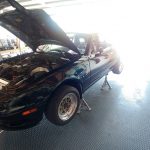
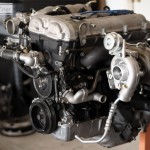





You know, I find it kinda funny, the many things you tinker with on your car, and how they relate to the Supra I”m building. I had a carbon hood made a few years back, that has a raised cowl. Mind you, not for the function, but for the style. Our cars are fairly similar in airflow patterns.
I haven’t even cut any holes for extraction yet, but now I have an idea of how to make the firewall shaped properly to seal up the back of the hood, like the factory intended. Thanks Adam.
HA! Nice. Glad to help. Cars are pretty much cars, huh?
I was pretty amazed when I noticed the indented area underneath the GV hood. I thought it was just smoothed (no power bulge) and angled up in the back. I didn’t realize it was cowl induction until I had it painted blue and had owned it for a couple years.
Cars are pretty much cars, you’re right. Just a matter of what goes where, but the ideas on how to make them fast can be applied to most all of them, I’ve found.
That said, I’m gonna test my cooling theories on the stock hood, before I go cutting into the one that weighs 1/10th as much. That, and it took something like a year or two between when I ordered it and when I got it, so I’m not too keen on the idea that my theory might not be perfectly sound, aerodynamically speaking.
In related news, the Supra will be driving this week. Maybe one of these days you’ll hear about the Miatas haha!